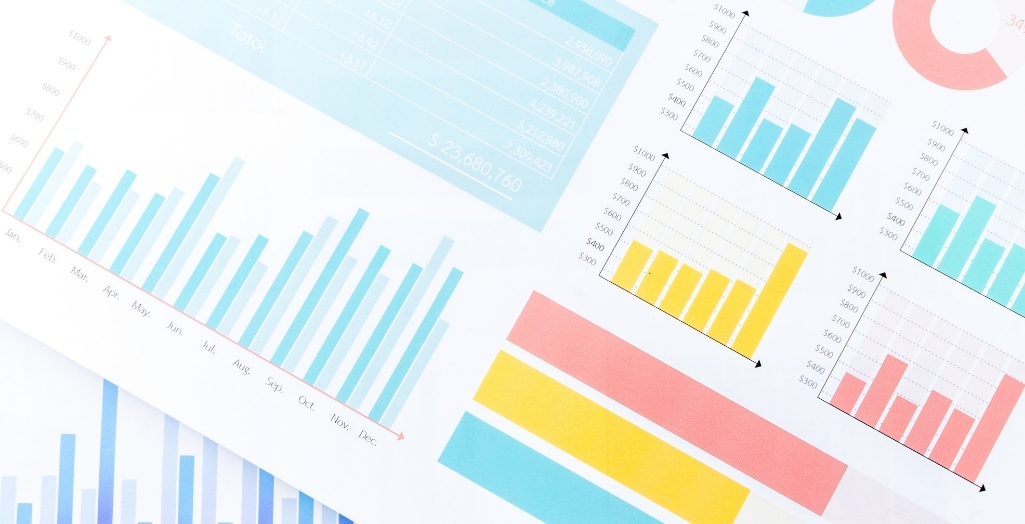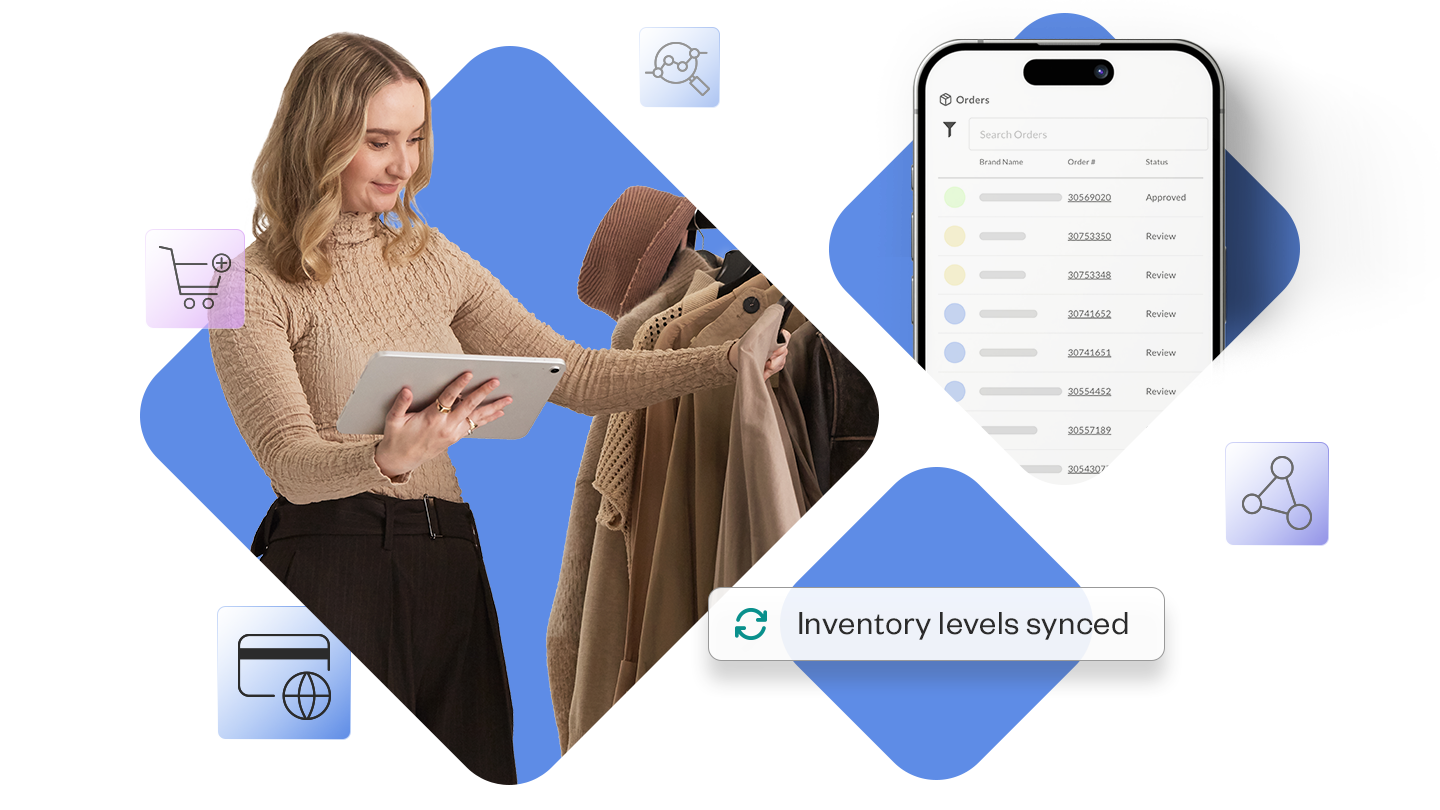The top 10 B2B eCommerce trends for 2025
Learn about the top eCommerce trends of 2025 that can help you take your business to new heights.

Tariffs and supply chain disruption are not the only significant trends changing wholesale in 2025 — after seeing significant channel disruption in the transition to online commerce, brands are now entering a new phase as omnichannel becomes the default consumer experience.
Today’s business climate requires perseverance, creativity, and new perspectives. Amid countless industry changes and obstacles, B2B eCommerce has continued to see large upturns in growth and revenues. In Q4 of 2024, eCommerce represented almost one quarter of all US sales, growing 9.3% year-over-year.
Read on for a look into some of the most popular B2B eCommerce trends in 2025 that brands can implement to thrive and take business to the next level.
1. Buyers want to build trust
Trust is increasingly critical, especially as more and more business transactions are moving online. Traditionally, buyers had more opportunities to meet up with brands in person at trade shows and in real-life showrooms. This type of face-to-face interaction offered an opportunity to touch products and ask direct questions about quality and pricing. Due to advances in B2B eCommerce tech, more and more buying interactions are happening virtually.
As a result, more buyers are looking for human connections. 26% of B2B buyers say the option to ask questions and get answers from a live representative is a significant trust-builder. Brands that can deliver a more human experience alongside seamless, trust-building technology will win over brands that don’t. Relationships are everything.
2. AI tech is personalizing shopping
Not only is transparency key in the online shopping world, but so are personalized experiences. More and more buyers crave shopping experiences that are data-driven and tailored to the needs of their retail customers. When shopping online, stats show that 75% of buyers are willing to switch to new suppliers for a better online shopping experience.
According to our 2025 State of B2B eCommerce survey report, just 24% of wholesalers currently use AI to personalize and improve buyer shopping experiences, suggesting that AI adoption is only beginning to gain momentum. Brands that invest in personalization tools like data-collection software, enterprise resource planning software, and a customizable B2B eCommerce platform that digitizes unique selling processes will stand out in the crowd.
3. Wholesalers prefer predictable pricing
According to our survey report, dynamic pricing that adapts to live market conditions and volume purchasing is less popular with brands than static and contract pricing, with 52% of brands expressing a preference for fixed pricing vs just 17% preferring dynamic pricing.
More brands want to mitigate risk this year and keep costs consistent, emphasizing sustainable growth to build resilience. Many brands are hesitant to use dynamic pricing because they lack full data integration. In fact, the same NuORDER survey report uncovered that only 25% have fully integrated eCommerce and ERP, making both forecasting and dynamic pricing more difficult and complex.
4. A shift towards truly omnichannel customer journeys
While buyers demand more eCommerce solutions, it’s critical for brands to know how each channel fits into the customer experience. A preference for holistic, omnichannel buying is emerging.
In fact, the 2025 State of B2B eCommerce revealed that 41% of brands are diversifying their sales channels and 30% are focusing on creating streamlined, omnichannel customer experiences.
Each platform serves a different purpose in your omnichannel sales, reaching customers across multiple touchpoints and further personalizing self-service and traditional buying experiences. Brands that make it easy for buyers to make purchases, find what buyers are looking for, and that provide a seamless user experience will see more success.
This evolution of customer experiences will continue in the future, making now the perfect time for wholesale brands to digitize and making this a very easy B2B eCommerce trend to implement into your business.
5. Brands are prioritizing partnerships
Loyalty and strong industry relationships are another big focus for brands in 2025. With better connections and more trust in customer, supplier and buyer partnerships, businesses hope to see more stability and reliable revenue in spite of widespread industry change.
According to our survey report, the majority (57%) of brands identify retail relationships as an investment priority. In fact, a similar percentage (32%) hope to sell deeper into existing customer accounts compared with roughly one-in-three (34%) looking to new geographic market investment this year for revenue growth.
These strategies are helpful when your brand faces unprecedented change — building on your existing relationships gives you the advantage of knowing your customer and becoming an integral part of their business.
6. Global expansion is seeking the path of least resistance
Expanding to new markets is a tried-and-tested strategy for revenue growth, and the brands that are expanding globally in 2025 are looking closer at attractive opportunities in North America and Europe particularly. One in ten brands are avoiding global expansion, looking instead to focus on their current markets.
These trends point towards a preference this year for following known, well-tested expansion strategies that are predictable and mitigate risk. Our report found that 41% of those brands expanding globally are doing so through partnerships with global suppliers and distributors, leveraging their expertise and market familiarity.
7. Buyers want more payment options
As B2B wholesale brands move sales online and adopt eCommerce sales technology, it’s important to remember to make the payment process seamless.
B2B buyers have a lot on their plates, including making purchases, managing cash flow, and budgets. eCommerce brands should do everything in their power to make the payment process easy for buyers. Experts recommend re-evaluating your payment options to see if your brand could use an upgrade.
In terms of B2B transactions, most brands probably already offer payment via major credit cards. Other ideas include implementing payment plans, providing purchase orders, or even extending credit. As the year unfolds, take the time to evaluate and optimize your payment options.
8. An excellent customer experience is essential
Another one of the top 2025 B2B eCommerce trends is the need to provide a stellar user experience for your retailers. Excellent customer and user experience is essential, and buyers are willing to pay more for a good experience.
To convert your buyers into loyal customers and provide these desired good experiences, make it easy for users to navigate your website and use your chosen eCommerce solutions.
Consider using a B2B eCommerce selling solution that makes it easy to connect with customers, communicate clearly, schedule virtual meetings, and show off your products in a digital environment. Providing a great customer experience is also about making it easy to navigate your line sheets, view your products with ease, and make an order with no hitches. And, don’t skimp on design, content production, quality product image resolutions, or product descriptions.
9. Brands must optimize for a mobile experience
We live in a world where almost everything revolves around smartphones. It only makes sense to optimize your site and services for a better mobile experience. Especially as Millennials and younger generations start to make up a large majority of purchasing power, having a seamless mobile user experience (UX) is priceless.
10. Wholesale is here to stay
Wholesale is still one of the biggest revenue drivers for brands in 2025. In our 2025 State of B2B eCommerce Report, wholesale is the highest priority for a majority of brands (72%), more than any other channel. And while the report showed brands are doubling down on stable growth and mitigating risks, the overall sentiment was that this is a good time for retail to grow by investing in partnerships and customer loyalty.
For more information about how NuORDER helps brands and retailers approach growth more intelligently, click below to schedule a demo.
Related articles
Get on the list
Wholesale tips and industry news you can’t miss, delivered weekly
